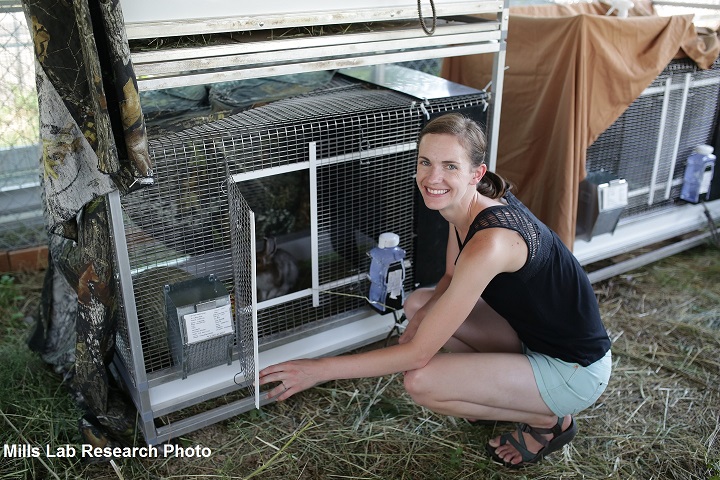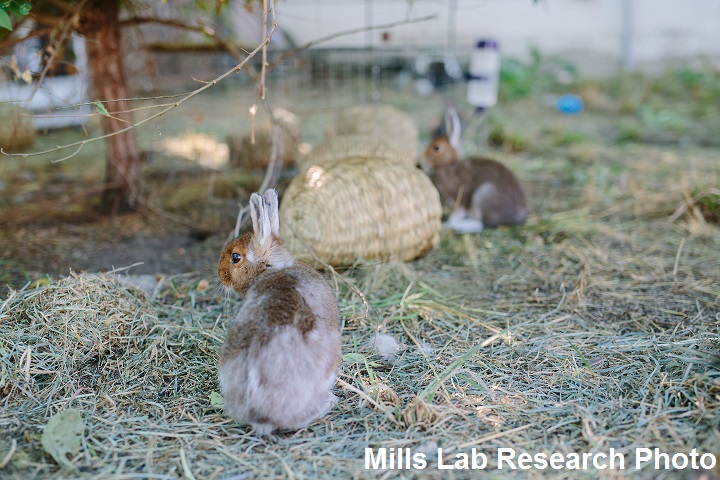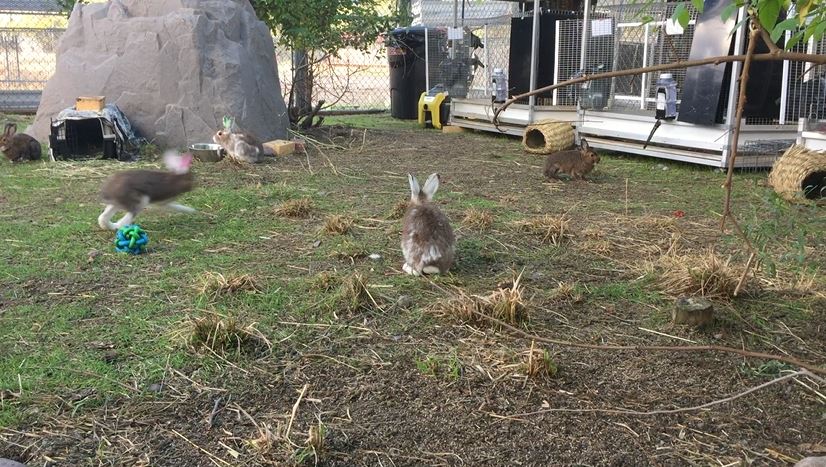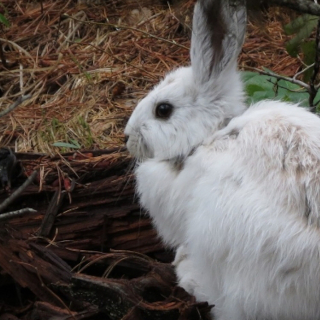New Captive Snowshoe Hare Facility

Our 20 captive snowshoe hares successfully made a cross-country trip from North Carolina to Missoula. These captive hares are being studied to learn how wildlife can adapt to climate change.
Currently the hares are acclimating to their new home and experiencing a few exciting changes. They are being housed outdoors and exposed to the natural elements, just as they would be in the wild, and they are free ranging in large enclosures. This has opened our eyes to some interesting and fun behaviors. The snowshoe hares are surprisingly social and playful. They will run full speed at one another and then vault over each other with Olympic worthy heights. While running together, they can often be seen “binkying” (an erratic bound where all four feet leave the ground simultaneously, considered to be an expression of joy). While they are quite habitual and will sleep in the same exact spot every single day, they are also curious and enjoy exploring anything new and different. They also enjoy digging and rolling in dirt, climbing on top of tall structures, and on cold days they will hunker down next to each other, possibly for warmth.

Image 1 - Hares beginning their winter molt
As we head into fall, and the days get shorter, our local Montanan hares are beginning to molt into their white pelage, while the Washington hares remain entirely brown. More information on the reasoning behind this phenotypic difference can be found in the article “The hidden history of the snowshoe hare, Lepus americanus: extensive mitochondrial DNA introgression inferred from multilocus genetic variation”. In 2018 we will continue behavioral studies on our furry friends, looking into how skilled they truly are at camouflage. Do they rely on chance (natural selection and seasonal timing) that they will match their background? Or are they aware of their specific coat color and whether or not they match their groundcover when threatened by a predator? Having this awareness or not could strongly affect the survival rates of snowshoe hares in the face of climate change and increased coat color-background mismatch.
Lindsey Barnard, Mills Lab Undergraduate and “Hare Whisperer”
Feature Image above: Lindsey hard at work at the new hare facility

Hare eating a strawberry

Hares enjoying their new home in Montana
